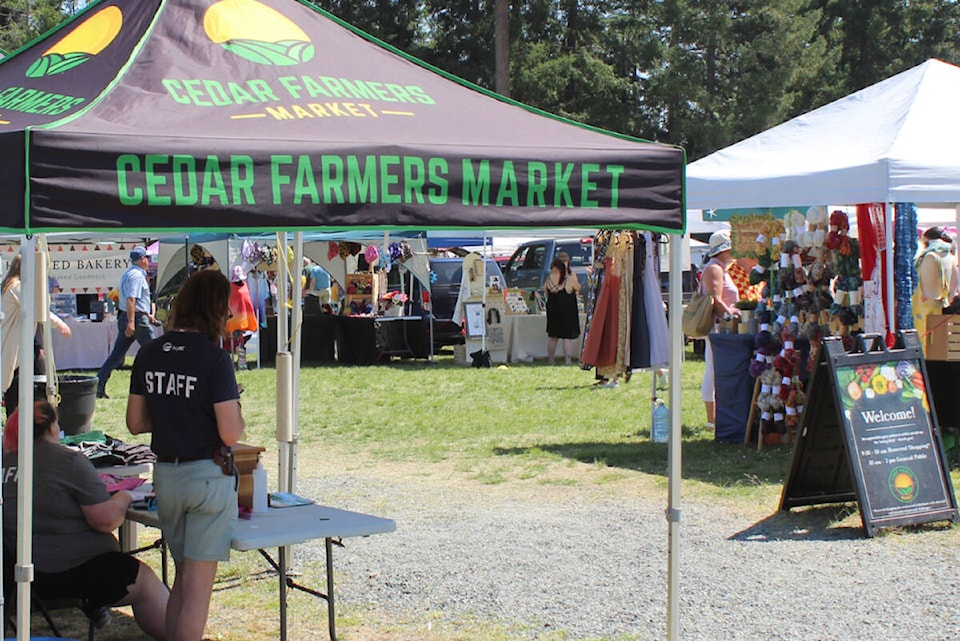Farmers’ markets within the Regional District of Nanaimo are a boon to local economies, according to analysis from the B.C. Association of Farmers’ Markets.
Kate Poirier, Cedar Farmers Market executive director, served as project coordinator for the 2023 B.C. Farmers’ Market economic impact study and presented findings at an RDN board meeting Tuesday, April 23, stating that markets provide financial lifeblood.
“We saw really strong numbers,” said Poirier. “The study’s happened before and the numbers are up across the board, but the Island specifically was far above average in almost every single metric. The vital goal, the support for markets here, is really over the top.”
The Cedar market, which runs from mid May to late October, brought $3.6 million of economic impact, $2.4 million in direct sales and $626,000 in spending at local businesses in 2023, according to Poirier. There were 58,900 visits last year.
The report suggested that for the year-round Island Roots Market Co-op, the economic impact was $1.5 million, direct sales were $1 million and $543,000 was spent at neighbouring businesses. There were 22,900 visits in 2023.
According to the Gabriola Agricultural Co-op Saturday Farmers Market report, economic impact totalled $1.3 million, direct sales $853,000 and $1 million spent at nearby businesses. The market saw 35,200 visitors in 2023.
Poirier has designs on keeping the Cedar market open year-round, which she said would lead to a projected $8.6 million of economic impact with $5.8 million in direct sales and $4 million in sales at nearby businesses, and close to 145,600 visitors.
When Vanessa Craig, RDN board chairperson, inquired about why the market isn’t year-round, Poirier said it is because of land classification.
“I think especially in Cedar, most of the inner core of our village is tightly wrapped with [agricultural land reserve] land,” said Poirier. “Our community hall doesn’t have a grounds, it’s ALR right up to the fence line and there’s not much RDN community space in our area that’s accessible to us … we can’t use the fields in the winter.”
The total economic impact of farmers’ markets on the Island was $58 million, while direct sales accounted for $38 million and $29 million in direct sales for neighbouring businesses, Poirier told the board. Provincially, the economic impact of farmers markets was $233 million, with $155 million in direct sales, $119 million spent at nearby businesses and five million visits, she said.
The study was a joint effort between the B.C. Association of Farmers’ Markets and the University of Northern B.C. Poirier said 72 on-site market assessments were conducted across the province, with 12,000 people and businesses surveyed.
READ ALSO: Cedar Farmers Market wins award for community impact
